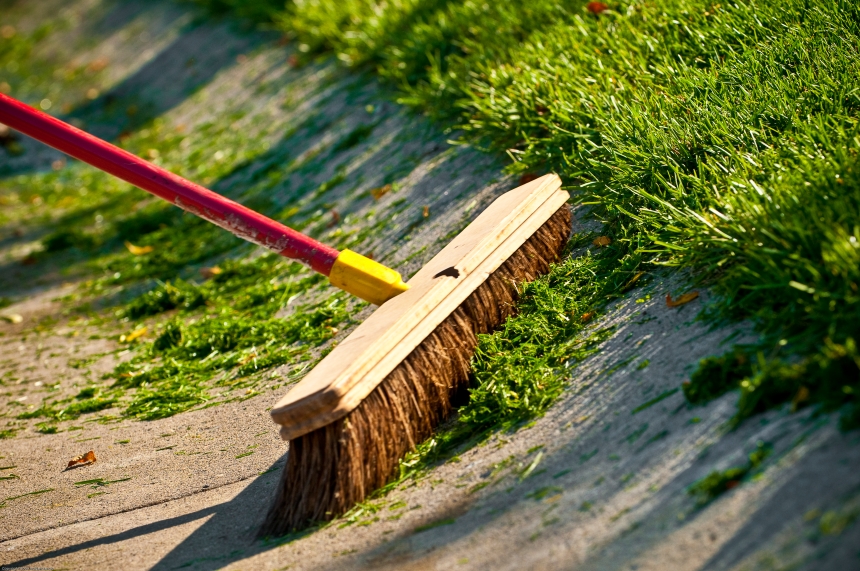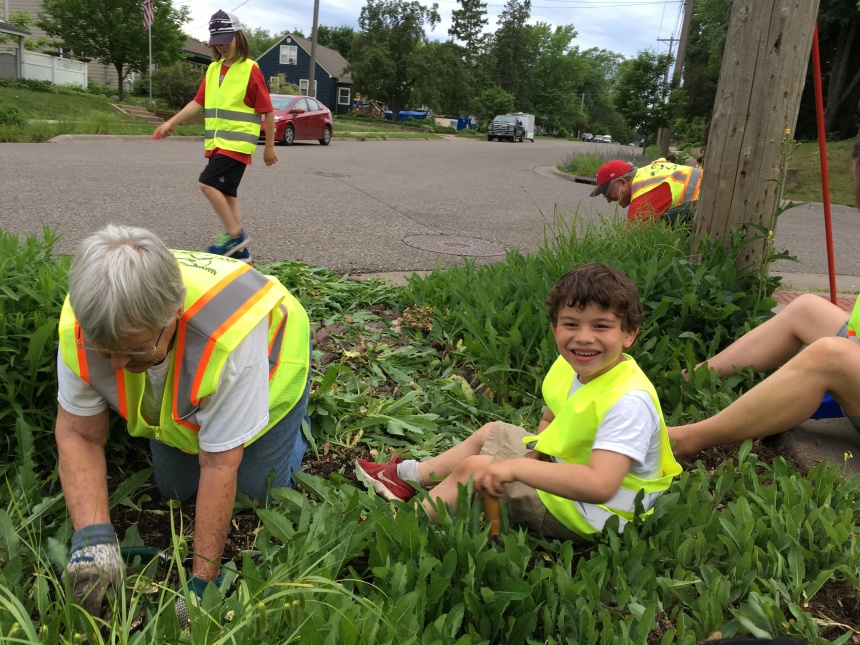“All operators are busy at the moment. Please stay on the line and your call will be answered in approximately…60 minutes.”
I was checking in on-line for a flight recently when I noticed that my name was wrong on the ticket. I called the airline and waited on hold for 1 hour, 7 minutes, and 52 seconds before a woman answered and quickly fixed the problem in less than a minute. It was a happy resolution to a simple problem, but the experience gave me plenty of time to ponder and think. As a result, I present to you now a short list of simple actions a person could take to protect Minnesota lakes, rivers and groundwater in 1 hour, 7 minutes, and 52 seconds…or less.
Five easy ways to protect our water in 1-hour or less!
- Rake and sweep the leaves, grass clippings, dirt and litter out of the street in front of your house. Storm drains carry rainwater from the road to nearby wetlands, lakes, streams and rivers. Sweeping litter, dirt and yard waste out of the street is a quick way to improve your home’s “curb appeal” and helps to keep those materials out of our water as well.

- Clean, drain and inspect your boat and trailer after getting out of the water. Aquatic invasive species (AIS) like zebra mussels, Eurasian watermilfoil, and spiny waterflea hitch rides on the bottoms of boats and trailers and inside ballast tanks, livewells, and other water-filled compartments. These non-native species can take over a lake or river, disrupting the natural ecosystem and causing significant expense to lake users and shoreline property owners. Minnesota law requires boaters to clean and drain watercraft, trailers and equipment before leaving a water-access and to keep drain plugs out while transporting watercraft to avoid accidentally spreading AIS.

- Box up old medicine in your house and deliver it to a drop site in Cottage Grove, Forest Lake, Stillwater or Woodbury. Dumping unused medications in the sink, toilet or landfill can pollute groundwater. Take a moment to gather up old and unused prescription, over-the-counter, and pet medication in your home and take it to one of four secure drop boxes, located at the Sheriff’s office in Stillwater, as well as the county service centers in Cottage Grove, Woodbury and Forest Lake. Drop boxes are open 8am-4:30pm, Monday-Friday, and drop-off is anonymous.
- Pull weeds from a raingarden in your neighborhood. Raingardens are bowl-shaped gardens designed to catch rain runoff from parking lots, streets, driveways and rooftops so that the water can soak into the ground instead of flowing through a storm sewer. Raingardens help to reduce water pollution and create habitat for birds and pollinators. Help to keep raingardens in your neighborhood looking spiffy by taking 1-hour to pick up litter and pull weeds. Find how-to’s at mnwcd.org/adoptaraingarden.

Raingardens capture runoff from rooftops, driveways and streets; filter the water; and soak it into the ground. Lend a helping hand to a raingarden in your neighborhood by picking a few weeds the next time you’re out for a walk.
- Pick up litter along a street or trail near your home. All too often, litter along streets and trails gets blown in waterways or washed into storm sewers. The next time you’re heading out for a walk, take a pair of gloves and a bag with you and pick up some litter as you go.
You’ve got 1 hour, 7 minutes, and 52 seconds to act. Water you waiting for?
